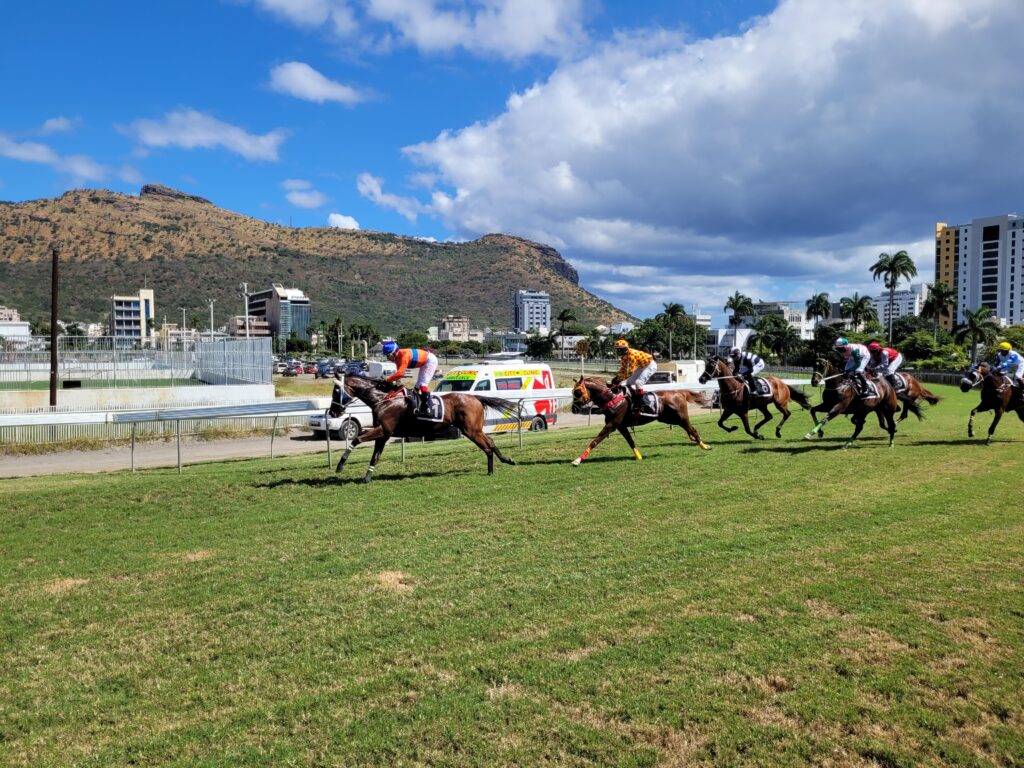If you’ve ever wandered through the heart of Port Louis and caught the faint sound of galloping hooves, you were likely near Champ de Mars, the oldest racecourse in the Southern Hemisphere. It’s more than just a racing track. It’s a living tapestry woven from colonial history, civic pride, and the raw thrill of competition, all tucked into a green hollow beneath Signal Mountain.
What began in the early 1800s as a French military training ground transformed, after British rule took over, into a symbol of unity. In 1812, Colonel Edward Draper and the Mauritius Turf Club launched the first official horse race on this very field, hoping to bridge the cultural divide between colonizers and settlers. Since then, Champ de Mars has not only survived, but grown into a cultural landmark where history and high-stakes racing still share the turf.
Spend a morning there and you’ll feel it. Not just the history, but the rhythm. At dawn, the track belongs to the horses and their grooms. Locals come to walk, jog, or simply take in the early light with the mountains at their back. When race day rolls around, usually on Saturdays between March and December, the entire atmosphere shifts. Children weave between adults, food vendors hawk samosas and biryani, and the grandstands begin to fill. There’s always a buzz in the air, a mixture of drums, shouting, and the metallic ring of tote machines accepting last-minute bets.
The oval track itself is modest in size, just under 1 300 meters with a deceptively short uphill home stretch. It’s tighter than most international tracks, making for intense turns and thrilling finishes. The prestigious Maiden Cup, held each year, often brings crowds of more than 60 000, packing the stands and the infield, and reminding everyone why this place is more than just tradition. It’s the pulse of the island.
One of the most iconic moments in Mauritian history took place right here. On March 12, 1968, under the watchful gaze of tens of thousands, the quad-coloured flag of independent Mauritius was raised at Champ de Mars for the first time. Since then, National Day ceremonies continue to be held here, complete with military parades and evening fireworks that light up the city skyline.
For visitors, it’s easy to reach. A short walk from the Caudan Waterfront or a quick ride from Victoria bus terminal, Champ de Mars is both central and scenic. Entry to the public stands is free, though you can buy a grandstand ticket for a small fee if you want a better view of the action. The historic Maiden Stand near the finish line offers some of the best vantage points, especially if you arrive early. You can also climb up to Fort Adelaide (La Citadelle) nearby for an unbeatable aerial view.
Even off-season or between race days, the area holds its charm. Joggers still circle the turf, children play football in the infield, and the breeze carries with it the echoes of Saturdays past. You don’t need to be a horse racing enthusiast to enjoy the charm. Come for the heritage, stay for the vibe. This is a place where horses, history, and local life share a stage under the open Mauritian sky.
Whether you’re betting on the Duchess of York Cup, watching the Maiden Cup thunder to its final moments, or simply strolling through the quiet paddocks at sunrise, Champ de Mars promises a glimpse into Mauritius that you won’t find in glossy brochures or crowded resorts. It’s real, loud, full of spirit, and unmistakably local.



